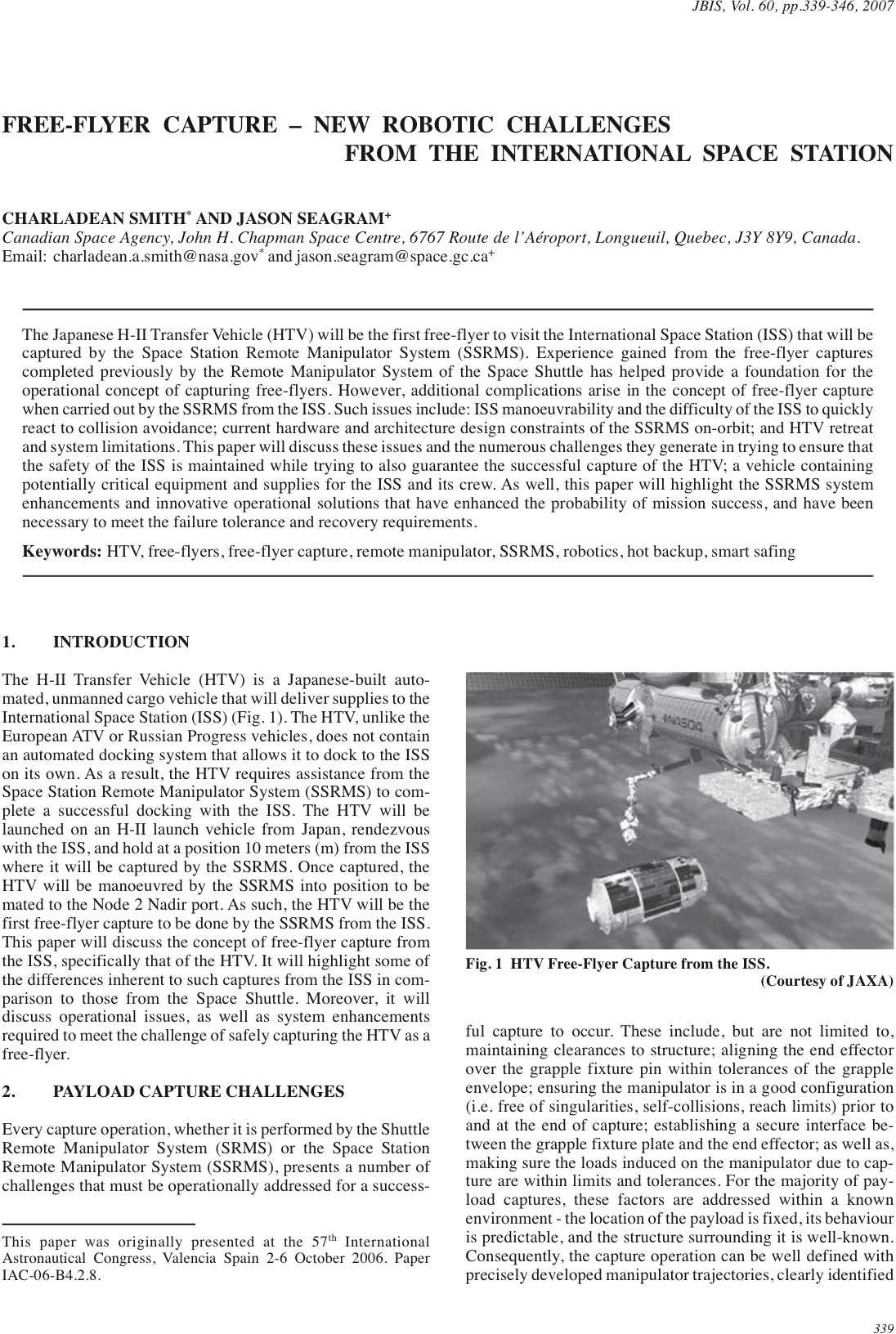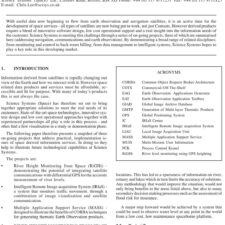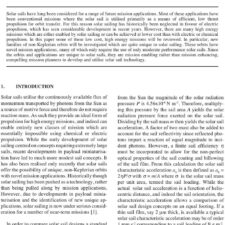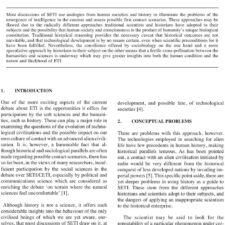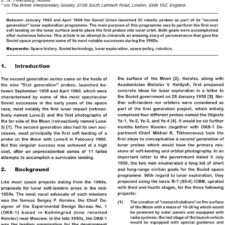Free-Flyer Capture – New Robotic Challenges from the International Space Station
£5.00
C. Smith; J. Seagram (2007), JBIS, 60, 339-346
Refcode: 2007.60.339
Abstract:
The Japanese H-II Transfer Vehicle (HTV) will be the first free-flyer to visit the International Space Station (ISS) that will be captured by the Space Station Remote Manipulator System (SSRMS). Experience gained from the free-flyer captures completed previously by the Remote Manipulator System of the Space Shuttle has helped provide a foundation for the operational concept of capturing free-flyers. However, additional complications arise in the concept of free-flyer capture when carried out by the SSRMS from the ISS. Such issues include: ISS manoeuvrability and the difficulty of the ISS to quickly react to collision avoidance; current hardware and architecture design constraints of the SSRMS on-orbit; and HTV retreat and system limitations. This paper will discuss these issues and the numerous challenges they generate in trying to ensure that the safety of the ISS is maintained while trying to also guarantee the successful capture of the HTV; a vehicle containing potentially critical equipment and supplies for the ISS and its crew. As well, this paper will highlight the SSRMS system enhancements and innovative operational solutions that have enhanced the probability of mission success, and have been necessary to meet the failure tolerance and recovery requirements.

